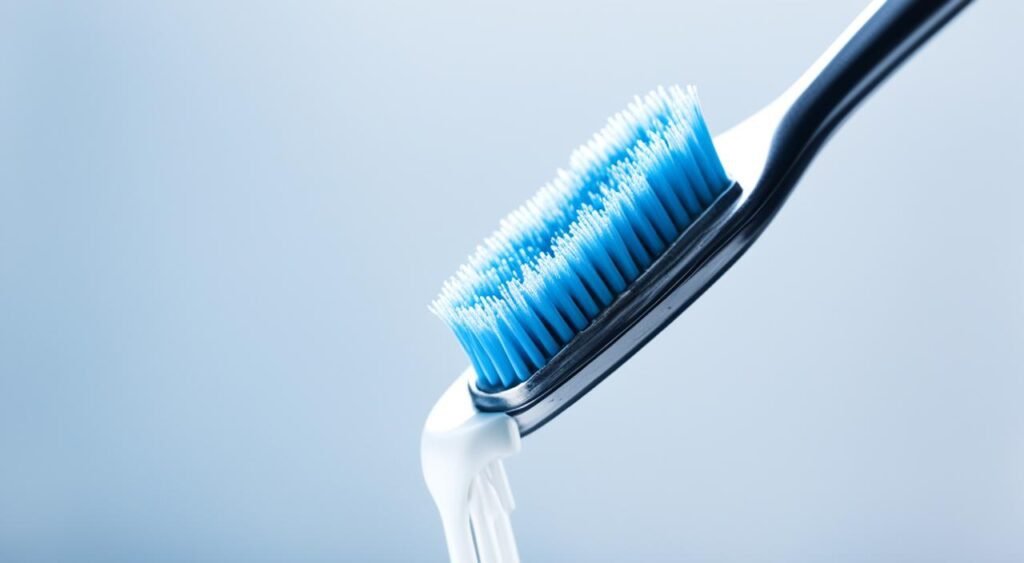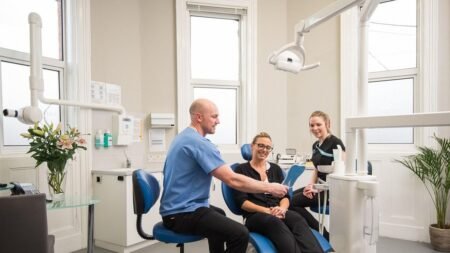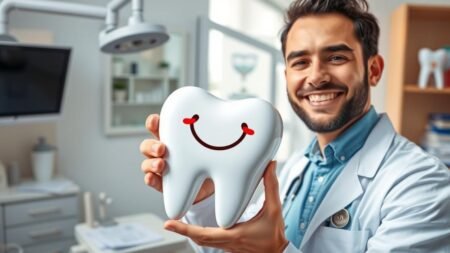Wondering how best to care for your teeth with braces? It’s not just about avoiding cavities. Effective dental care ensures your orthodontic treatment is successful. The truth is, not every toothbrush is good for braces. With the right toothbrush and technique, you can clean around the braces well, keeping your smile brilliant.
Finding the right toothbrush for Braces goes beyond the price. It’s about functionality. Think of a toothbrush with a small, round head navigates your braces comfortably. Soft bristles gently take care of your gums. A comfortable handle lets you brush like a pro. It’s more than just a brush; it’s your dental health investment. Check out the Platypus Orthodontic Care Kit for Braces for a complete solution. Remember, you hold the key to keeping your teeth healthy with braces.
Key Takeaways
- Choosing a toothbrush with a small, round head, soft bristles, and a comfortable handle is crucial for optimal dental care with braces.
- ADA approval signifies a toothbrush that has been assessed for safety and efficacy in orthodontic dental hygiene.
- Investing in specialized tools or ortho starter kits, like the Platypus Orthodontic Care Kit for Braces, can greatly improve daily oral care routines.
- Effective brushing techniques involve not just the right toothbrush but also consistency and correct application, ideally twice a day.
- For a comprehensive cleaning, having two types of toothbrushes—one for daily use and one for cleaning braces—is recommended.
Understanding the Significance of Proper Brushing with Braces
To keep your orthodontic care up, it’s vital to know the best way to brush with braces. Doing this keeps your braces looking good and your mouth healthy.
Why Brushing Technique Matters for Orthodontic Care
Keeping braces clean is crucial for avoiding issues like cavities and gum disease. Braces can make it hard to clean well because food and bacteria can get stuck. Make sure to brush twice a day for two minutes. This way, you’ll keep all parts of your teeth clean, even around the braces.
Common Challenges of Brushing with Braces
Having braces can make brushing tricky, especially reaching behind wires and brackets. Tools like interdental brushes and floss threaders help. They clean the spots your regular toothbrush can’t, preventing big dental problems later on.
Using disclosing solutions also helps by pointing out spots you’ve missed. This way, you learn how to clean better over time. For those tricky spots, electric toothbrushes with soft bristles are recommended. They clean well without harming your braces.
| Tool | Purpose | Usage Tips |
|---|---|---|
| Soft-bristle brush | Cleans around brackets and wires | Use with gentle pressure in a circular motion |
| Electric toothbrush | Efficient plaque removal | Set to moderate power to avoid damage |
| Interdental brush | Cleans between braces and under wires | Use daily to remove trapped food and plaque |
| Floss threader | Access under archwires for flossing | Use daily to prevent gum disease and decay |
Creating a good cleaning routine will help your smile and your health. Always remember, braces are temporary, but good oral hygiene lasts a lifetime.
Key Features of the Best Toothbrush for Braces
Choosing the right toothbrush with braces is key for a clean mouth. The toothbrush’s shape and how it works are very important for cleaning around and under braces. We’ll look at why the best toothbrush for braces needs the right head, soft bristles, and a comfy handle.
The Advantage of a Small, Round Brushing Head
A small, round brush head is perfect for cleaning braces. It can get into all the nooks and crannies. This makes sure your whole mouth, even the back teeth, stays clean. Toothbrushes like the TEPE Universal Care Soft Slim and Oral-B Pro Series are great for this.
Soft Bristles: Protecting Your Gums and Braces
Soft bristles are a must for people with braces. They’re gentle on your mouth and the braces, preventing harm. Toothbrushes like the Oral-B Pro 1000 have soft bristles that are gentle on gums and do a great job cleaning without hurting your braces.
A Toothbrush Handle That Offers Comfortable Grip and Control
Don’t forget about the handle of your toothbrush. A handle that’s easy to hold and use is very important. It helps you clean your teeth well without hurting your braces. Look for toothbrushes with ergonomic handles and non-slip grips. They make brushing with braces easier and safer.
Picking a toothbrush with these features will make cleaning your teeth with braces better. From the brush head to the handle, every part matters for keeping your braces and teeth healthy. Don’t forget, good oral care now is key for a healthy smile in the future.
Manual vs. Electric Toothbrushes: Which is Right for You?
If you wear braces, picking the right toothbrush is key to clean teeth and gums. You might be weighing the benefits of manual versus electric toothbrushes. Each type suits different needs and lifestyles.
Electric toothbrushes come with great features such as timers for proper brushing time. They work well for people with braces. This is because they can clean around braces better, reducing plaque by up to 21% in three months.
However, manual brushes have their own perks. They are cheaper, portable, and need no charging. If you have a good brushing technique and follow dental advice, manual brushes can be effective.
Now, let’s compare the main key features of both types:
| Feature | Electric Toothbrush | Manual Toothbrush |
|---|---|---|
| Plaque Removal Efficiency | Higher (21% reduction after 3 months) | Lower efficiency without proper technique |
| Cost | Higher initial and maintenance cost | More cost-effective, needs replacing often |
| Convenience | Needs charging, not great for travel | Easy to carry |
| Features | Has a timer and various settings | Simple, depends on how you use it |
The decision between electric and manual toothbrushes is personal. If you want superior plaque removal and like high-tech tools, go electric. On the other hand, if you trust your brushing skills, a manual toothbrush is still a good choice. Whatever you pick, remember to brush well and often, especially when wearing braces.
The ADA Seal of Approval: Deciphering Its Importance
Searching for the right toothbrush can be tough, especially for those with braces. There are so many on the shelves. But, the ADA Seal of Approval is there to help. It means the product is really safe and works well. The American Dental Association (ADA) has set high standards for it.
The ADA Seal is more than just a stamp of approval. For people with braces, it’s a must-have. It shows the toothbrush has been carefully checked for how well it cleans and its design. Picking one with the ADA Seal means your teeth and braces get the best care.
| Feature | Benefit |
|---|---|
| End-Rounded Bristles | Protects gums and dental surfaces during brushing. |
| Tested Brush Head Size | Ensures efficient cleaning around braces and hard-to-reach areas. |
| Safety Tests | Confirms that the toothbrush does not cause damage during proper use. |
| Efficacy in Plaque Removal | Guarantees that the toothbrush effectively removes plaque, reducing the risk of gum disease and tooth decay. |
For a healthy smile with braces, the right tools are vital. Choosing items with the ADA Seal is a smart move. It guards your dental care and your money. Don’t forget the ADA Seal of Approval next time you shop for a toothbrush. It fights plaque and keeps your braces safe.
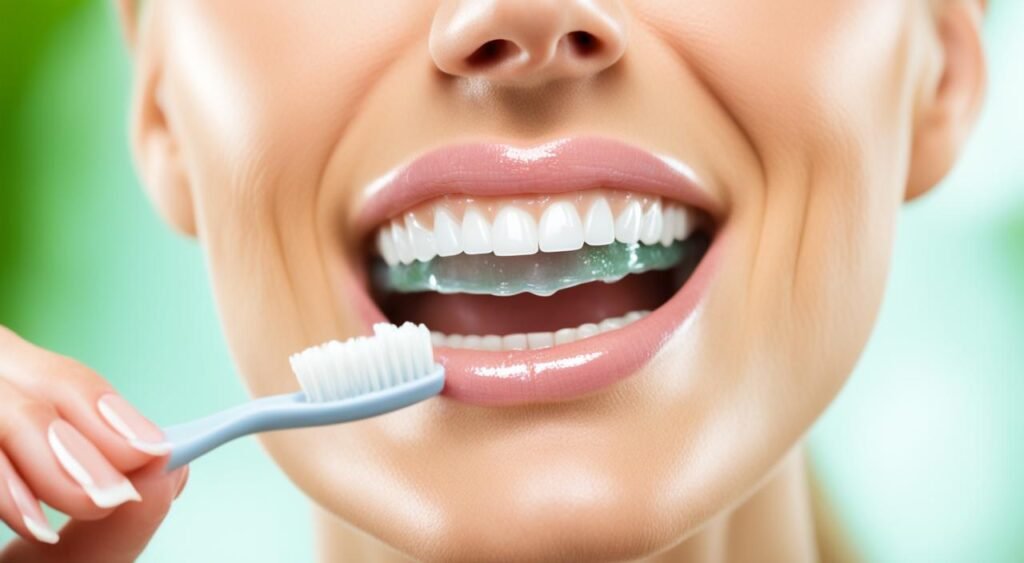
The ADA Seal boosts your confidence in a toothbrush’s quality. It’s a great help, especially for those looking for trusted dental products for braces. Going for ADA-approved options protects your teeth and makes picking a toothbrush easier.
Top Recommended Toothbrush Models for Braces
Choosing the right toothbrush for your braces is key. It’s as important as how you brush. In this part, we look at top toothbrush models for braces. These options are perfect for keeping braces clean and comfy. Let’s dive into some of the leading choices for people with braces.
TEPE Universal Care Soft Slim Toothbrush
The TEPE toothbrush is slim, perfect for braces. It gets into small spaces other brushes can’t. This means a deep, comfortable clean for brace wearers.
Philips Sonicare ProtectiveClean for Braces
Philips Sonicare uses special sonic technology. It cleans braces and teeth well. And it’s gentle, so it won’t hurt your gums, making it great for anyone with sensitive teeth.

Philips Sonicare ProtectiveClean 4100 Rechargeable Electric Toothbrush
- Pressure sensor protects teeth and gums from excess brushing pressure
Oral-B Pro Series with Specialized Brush Heads
The Oral-B Pro has brush heads that clean awkward spaces effectively with their angle. It’s built to clean braces thoroughly. It also has features to make brushing better, like pressure sensors and timers.
| Model | Price Range | Key Features |
|---|---|---|
| TEPE Universal Care Soft Slim | $6-$8 | Soft bristles, slim design for hard-to-reach areas |
| Philips Sonicare ProtectiveClean | $24-$78 | Pressure sensor, multiple vibration modes, removes up to 6x more plaque |
| Oral-B Pro Series | $12-$78 | Specialized brush heads, crisscross bristles, pressure sensor, timer |
Toothbrush for Braces: Specialty Designs for Optimal Cleaning
Keeping your teeth clean with braces is tough. But, using the right tools helps a lot. Specialized orthodontic toothbrushes and ortho starter kits are great for this. They help you keep your smile bright during your orthodontic treatment.
Advantages of Orthodontic Toothbrushes with Customized Bristle Patterns
Orthodontic toothbrushes aren’t ordinary. They have customized bristle design for braces. For instance, model 4463817 has soft bristles in smart places. These work well around braces and wires, reducing harm and cleaning deeply. They reach places that are usually hard to get to, giving a comprehensive braces care that boosts your oral health.
Why Ortho Starter Kits Might Be a Wise Investment
Getting an ortho starter kit is smart for your braces. This kit has everything you need, like special toothbrushes and floss. It even includes orthodontic wax to keep things smooth. Each item is essential. They keep your mouth clean, stopping plaque and gum issues.
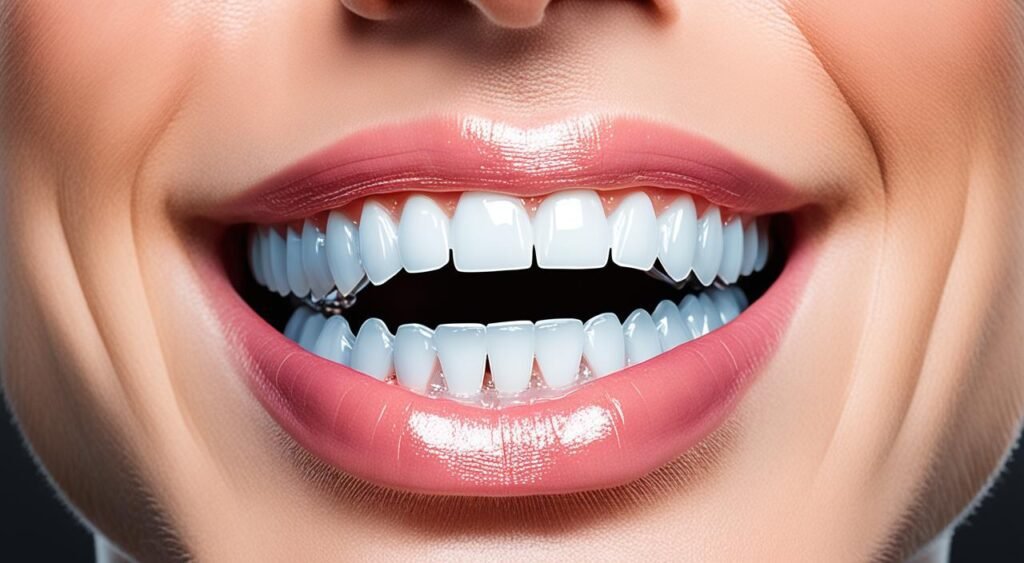
Just avoiding candy or brushing well isn’t enough with braces. You need the right tools. Specialized orthodontic toothbrushes and ortho starter kits work wonders. They not only make cleaning easier every day. They protect your braces and your awesome smile too.
Integrating Effective Cleaning Tools Beyond Your Toothbrush
Braces are key for a beautiful smile but can make keeping teeth clean a challenge. Along with brushing, it’s crucial to use additional oral hygiene tools. This enhances your cleaning routine and ensures your teeth get fully clean, even where your toothbrush can’t reach.
Interdental brushes, like GUM Soft-Picks, are a must. They can get rid of food bits and plaque stuck in the braces. Water flossers are also great for this job. WaterPik’s models, for instance, use strong water pressure to clean around braces perfectly, fighting off plaque and gum problems.
It’s vital to know how braces cleaning accessories help your oral health. Let’s look at a chart that shows why some cleaning tools are important:
| Tool | Function | Recommended Use |
|---|---|---|
| Interdental Brushes | Cleaning around brackets and between wires | Daily, especially after meals |
| Water Flosser | Removes food particles and plaque with water pressure | At least once daily |
| Dental Picks | Portable solution for quick cleaning | As needed throughout the day |
These tools are not just nice to have; they’re essential for cleaner teeth and a healthier mouth. By using the right tools regularly, you can avoid serious dental problems in the future. This ensures your braces are doing their job and saves you from needing a lot of dental work later.
Conclusion
Finding the right toothbrush is crucial for your dental journey, especially with braces. Choose a brush that fits braces well. It should have a small, round head and soft bristles. This makes sure you can clean around the braces effectively. A good handle also helps you control the brush better.
Many people around the world have dental problems. So, picking the right toothbrush is more important than you might think. Look for products with the ADA Seal of Approval. This seal shows they meet high standards for dental health.
Experts recommend brushing your teeth twice a day. Do this for 3 to 5 minutes every time. This keeps your teeth and gums healthy.
Even though some electric toothbrushes can be expensive, your dental health is worth the cost. Use extra tools like Water Floss or Air Floss for better cleaning. This is especially important for people with braces. It helps prevent gum diseases which research shows happens a lot. By brushing regularly and using the right tools, you’re working towards a beautiful smile.
FAQ
What makes a toothbrush ideal for braces?
The perfect toothbrush for braces has a small, round head. It must have soft bristles to prevent harm. It also needs a comfy handle for easy, effective brushing.
Why is it important to use a toothbrush with soft bristles for braces?
Using soft bristles is key because they’re gentle. They keep gums and braces safe. Plus, they clean well around braces without causing damage.
Should I use a manual or electric toothbrush if I have braces?
You can use either as long as it’s gentle. Electric brushes offer extra features. But, choosing between manual and electric is up to you.
How does the ADA Seal of Approval influence toothbrush selection for braces?
The ADA Seal means a toothbrush is safe and effective. By picking a toothbrush with this seal, you ensure it’s a good choice for keeping your braces clean.
What are some highly recommended toothbrush models for people with braces?
Highly recommended toothbrushes for braces include the Philips Sonicare. Also, consider the TEPE Universal Care and the Oral-B Pro Series. They’re all made to be gentle on braces.
What are orthodontic toothbrushes, and how do they differ from regular ones?
Orthodontic toothbrushes meet braces wearers’ special needs. They have special bristle patterns for cleaning around brackets and wires better than regular brushes.
What additional cleaning tools should I integrate into my oral hygiene routine with braces?
Along with a good toothbrush, add interproximal brushes and soft dental picks to your routine. Water flossers can also be very helpful for cleaning hard-to-reach spots around your braces.
Are there any oral hygiene kits designed for people with braces?
Yes, there are orthodontic care kits like the Platypus Orthodontic Kit. These kits come with tools that make caring for your braces easier and more effective.
How often should I replace my toothbrush when I have braces?
Change your toothbrush every three to four months. With braces, you might need to replace it sooner. Look out for worn or frayed bristles, which mean it’s time for a new one.
Can using the wrong toothbrush affect my orthodontic care?
Using the wrong toothbrush can make it hard to clean your braces properly. This can lead to dental problems like cavities. It’s crucial to use a toothbrush that’s designed for braces.





